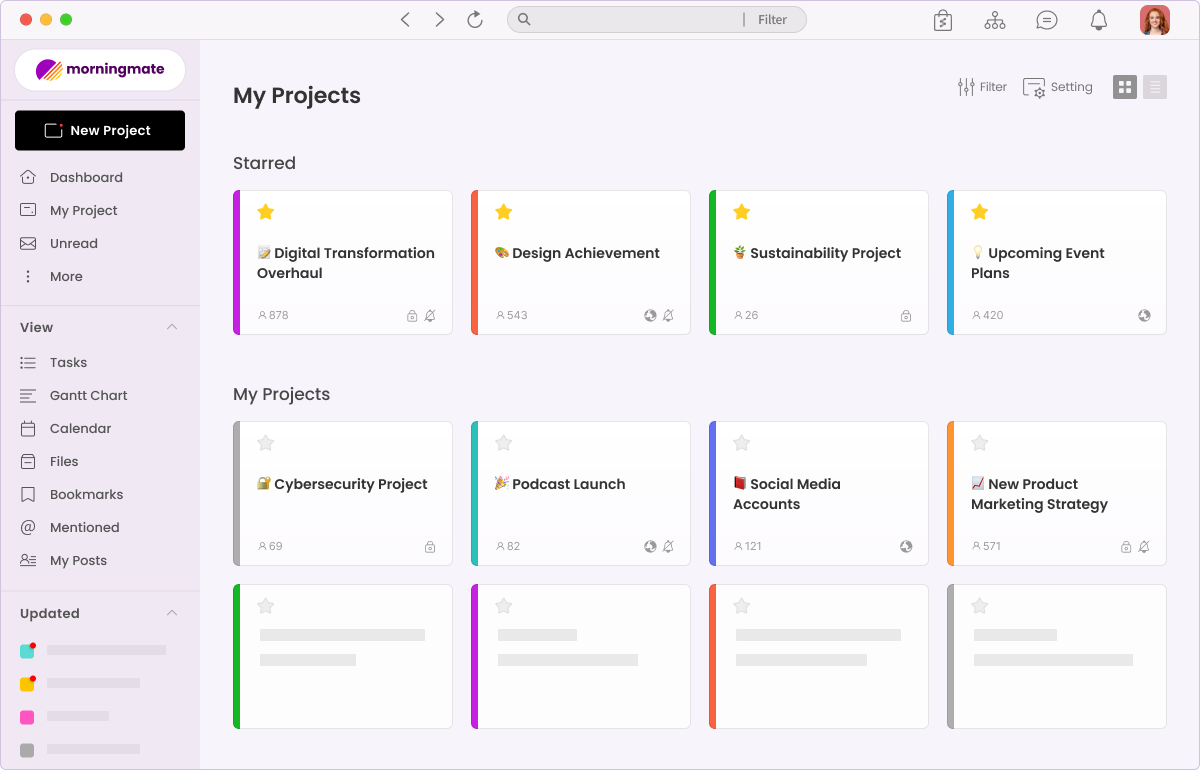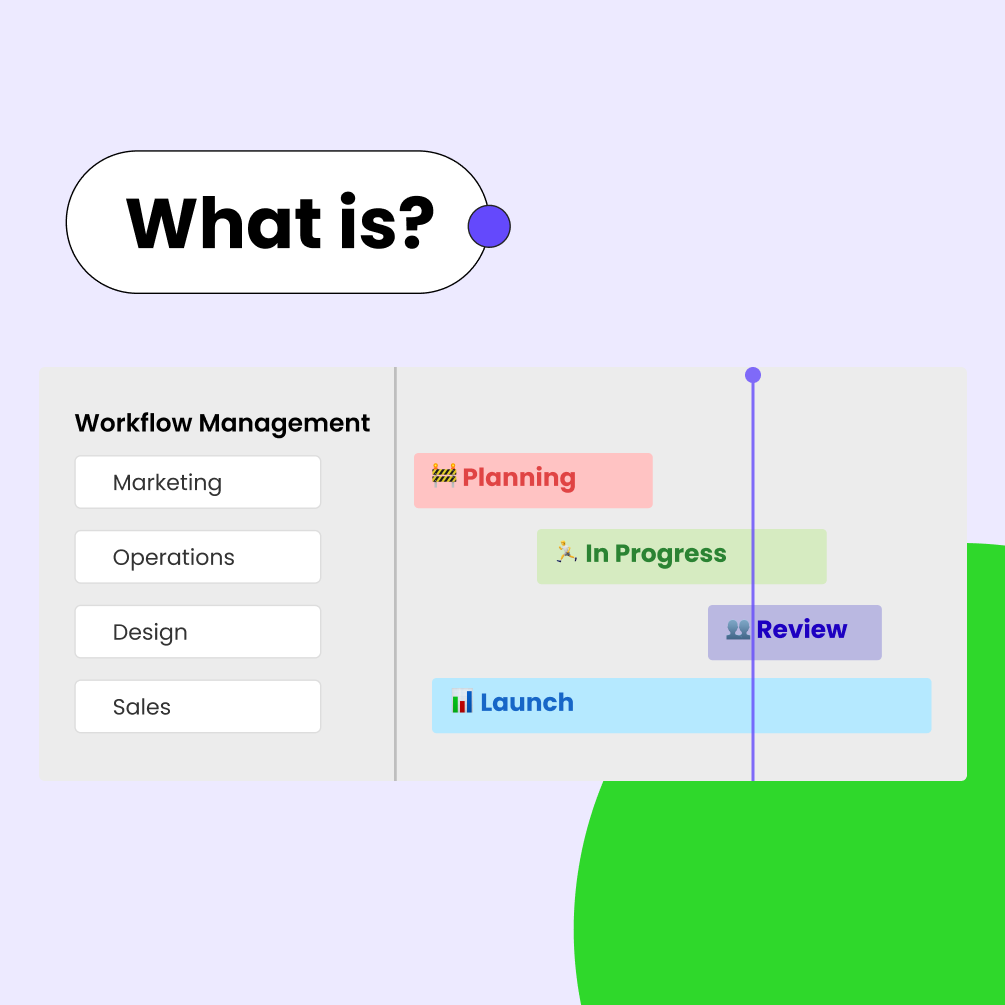Project management in 2025 presents unprecedented challenges. Complex remote teams, AI integration, and tighter budgets exacerbate traditional issues like poor communication and unclear objectives. Even experienced project managers find it difficult to adapt to today’s hybrid workflows.
This guide addresses the 12 most significant project management challenges with practical solutions. You’ll discover effective strategies for each issue, along with insights on how tools like Morningmate can streamline tasks, timelines, and team communication in a single workspace.
Stop putting out fires and start achieving success. Let’s transform your biggest obstacles into victories.

Why Project Management Is More Challenging Than Ever
Project management is becoming increasingly complex. In 2025, challenges escalate as teams navigate hybrid work environments, AI tools, and constrained budgets. These difficulties lead to delays, misalignment, and frustration.
Even tried-and-true strategies can falter in the face of today’s project management issues. Understanding the underlying causes allows us to address the root problems rather than just the symptoms. Let’s examine two key factors contributing to these challenges.
The Growing Complexity of Projects
Today’s projects involve more moving parts than ever before. Teams span multiple time zones, the number of tools continues to grow, and client demands can change rapidly. Integrating AI or new technologies adds unexpected layers of complexity. For instance, a marketing campaign may require collaboration among data scientists, remote designers, and compliance experts, all needing to sync in real-time.
This complexity can create communication gaps and bottlenecks. Scope creep often occurs when stakeholders introduce new requests mid-project, stretching timelines and budgets. Unplanned costs, such as sudden software subscriptions or security upgrades, can strain budgets. Without effective coordination, projects can easily fall apart.
Why Experienced PMs Face Challenges
Years of experience do not always ensure success. Traditional management methods may face challenges in hybrid environments where “managing by walking around” is no longer practical. Risk management frameworks might not adequately address concerns related to AI ethics or data privacy. Experienced project managers may depend on waterfall methodologies, but agile-hybrid projects necessitate a degree of adaptability.
For instance, a seasoned manager might underestimate the impact that remote freelancers can have on decision-making or fail to recognize skill gaps in emerging technologies such as blockchain. Additionally, rapid changes in tools can impede progress, as the time required to learn new platforms can detract from strategic planning.
Without the ability to adapt, expertise can become more of a liability than an asset.
Top Project Management Challenges in 2025
The complexities we’ve discussed set the stage for today’s most pressing challenges. Here are the 12 key project management issues in 2025 that can derail timelines, inflate costs, and frustrate teams.
Ignoring these challenges can lead to project failure. It’s essential to confront these issues directly. We’ll break down each challenge, its source, and its real-world impact.
1. Scope Creep
Scope creep happens when project boundaries expand uncontrollably. New requests can pile up after work begins, such as adding app features to a website redesign. This can stretch timelines and budgets.
Teams may experience burnout from handling unplanned tasks. Stakeholders often introduce “small” changes without proper approval, leading to 50% of project overruns. Establishing clear change protocols can help prevent scope creep from derailing your project.
2. Poor Communication
Lack of communication between teams leads to errors, and remote work can exacerbate this issue. Messages can get lost across platforms like Slack, email, and meetings. A developer might miss a design update, or a vendor may miss a deadline that wasn’t confirmed.
These communication breakdowns can delay deliverables, costing projects 30% in rework. Centralized communication hubs are essential to prevent confusion from becoming the norm.
3. Unclear Goals and Success Metrics
Vague objectives can quickly sink projects. Teams may work without a clear understanding of priorities. Is speed more important than cost? Are we tracking revenue or user growth? Unclear goals can lead to conflicting efforts.
For instance, a marketing team might focus on clicks instead of conversions, wasting valuable resources. Establish measurable goals from the outset and link every task to a clear outcome.
4. Budgeting Issues
Underestimating costs can derail projects. A software project might overlook cloud hosting fees or training costs for new tools. Budgets can also suffer from scope creep, leading to unexpected expenses that force painful cuts.
These budgeting challenges contribute to 28% of project failures. Implementing realistic contingency plans can help prevent budget disasters. Regularly track spending to catch overruns early.
5. Skill Gaps on the Team
Lacking necessary expertise can slow progress. A team developing AI tools might need ethics specialists, or a construction crew may require drone operators. Skill gaps can lead to delays and quality issues, causing projects to stall while waiting for new hires or training.
These challenges affect 67% of tech initiatives. Conduct a skills audit before starting work and cross-train team members to fill gaps quickly.
6. Weak Risk Management
Neglecting risk management can lead to disaster. Suppliers may go out of business, or new regulations could disrupt your approach. Teams often skip risk planning to save time, only to face crises from floods, cyberattacks, or market shifts.
These issues can create avoidable crises. Proactive risk registers can help identify threats early. Update them monthly to stay ahead.
7. Lack of Accountability
Unclear ownership can kill momentum. Tasks may bounce between team members, leading to missed deadlines with no one held accountable. A missed client milestone might be blamed on “the team” rather than a specific individual.
This lack of accountability erodes trust and can cause projects to drift. Assign every task to one person and use public dashboards to clarify ownership.
8. Stakeholder Disengagement
Busy executives may overlook updates, and clients can delay feedback for weeks. Disengaged stakeholders may withhold approvals or resources, misaligning the team.
This disengagement can create bottlenecks. Schedule brief, weekly check-ins and summarize decisions in shared documents to keep everyone aligned.
9. Unrealistic Deadlines
Imposed timelines can set teams up for failure. Leadership may demand a six-month project be completed in three, leading to rushed work that sacrifices quality or safety. Overtime can burn out talent, increasing error rates by 40%. Push back against unrealistic deadlines early and provide data to support your case.
10. Resource Constraints
Insufficient personnel or tools can hinder progress. For example, three engineers may struggle to manage five projects, and shared software licenses can create logjams. These resource constraints delay 35% of deliverables. Map out resources before approving project scope and decline low-priority requests.
11. Scheduling Conflicts
Overlapping priorities can divide focus. A designer juggling multiple projects may deliver subpar work, and team vacations can clash with critical phases. These scheduling conflicts can lead to missed milestones. Centralized calendars and capacity planning can help mitigate these issues.
12. Technology Limitations
Outdated tools can severely impact efficiency. Slow software can bog down remote teams, and incompatible systems can block data sharing. These technology limitations can add hours of manual work. Conduct quarterly audits of your tech stack and invest in integrated platforms to enhance productivity.
By addressing these challenges head-on, you can improve your project management processes and drive your team toward success.
Solutions to Common Project Management Challenges
Today’s project management landscape requires proactive solutions, not just the identification of problems. The twelve challenges we’ve identified can derail timelines and budgets if left unaddressed.
These ongoing issues need targeted strategies that go beyond quick fixes. Effective approaches can turn these challenges into manageable workflows. Here, we’ll discuss eight proven methods that tackle root causes instead of merely addressing symptoms.
These strategies are applicable across various industries and team sizes, offering adaptable frameworks for navigating the complexities of project management in 2025. By implementing them systematically, you can prevent minor issues from escalating into major setbacks.
Define Project Goals and Scope Early
Establish clear, measurable objectives before starting any work. Gather stakeholders to agree on specific outcomes, such as “Reduce checkout abandonment by 20% by October.” Clearly document the project boundaries, including what is included and what is not.
Create a formal change control process that requires written requests and impact assessments for any new demands. Review this scope document weekly with the core team to avoid misunderstandings that can lead to uncontrolled project expansion.
Keeping goals visible and fixed throughout the project lifecycle helps teams stay aligned on priorities. Clarity in scope can prevent 52% of project overruns, according to PMI studies.
Establish Open Communication Channels
Create a centralized digital hub for all project communications to eliminate scattered messages. Consolidate updates, files, feedback, and decisions in one accessible platform. Implement daily 10-minute stand-up meetings for quick alignment and weekly in-depth sessions for more complex issues.
Assign communication leads for each stakeholder group to ensure consistent messaging. Automate status reports through integrated tools that provide real-time updates, breaking down information silos where critical details can get lost.
Centralizing communication can reduce meeting time by 30% while improving information retention among distributed teams across different time zones and locations.
Align Budgets With Realistic Expectations
Begin budget planning by analyzing historical data from similar projects. Include a contingency buffer of 15-25% for unexpected costs, such as software subscriptions, training, or compliance updates.
Use phased funding aligned with project milestones: release 30% at kickoff, 40% at prototype, and 30% at delivery. Track expenses against forecasts in weekly reviews using visual dashboards. Require executive approval for any unbudgeted scope changes before implementation.
This approach helps prevent budget shortfalls, which derail 28% of initiatives. Realistic financial planning provides flexibility when unexpected challenges arise during complex projects.
Build a Skilled, Cross-Functional Team
Identify skill gaps during project planning using competency matrices. Proactively recruit specialists for emerging needs, such as AI ethics or blockchain integration. Develop internal talent through micro-learning modules focused on project-specific skills.
Implement mentorship pairings between senior and junior team members. Rotate roles periodically to build versatile experience across functions and balance workloads to prevent burnout among critical experts.
This strategy addresses the talent shortages affecting 67% of tech projects. Continuous skill development fosters resilient teams capable of adapting to changing requirements without relying on external resources.
Utilize Risk Assessment Frameworks
Create a dynamic risk register during project kickoff. Score each potential threat based on probability (1-5) and impact (1-5), focusing on those with scores above 8. Develop preemptive response plans, such as, “If vendor delays exceed 2 weeks, activate backup supplier B.” Assign risk owners to monitor triggers like market shifts or regulatory changes.
Review risks biweekly in team meetings and update mitigation strategies quarterly. This proactive approach can prevent 45% of project crises, according to industry analysis. Structured risk management turns uncertainties into manageable variables rather than constant emergencies that disrupt workflow.
Establish Clear Accountability Structures
Assign each deliverable to a specific owner with clear responsibilities. Use public dashboards to display ownership maps that link tasks to individuals. Set up automated reminders for upcoming deadlines and overdue items.
Hold twice-weekly 15-minute accountability check-ins focused on identifying progress blockers. Recognize consistent ownership through team shout-outs or simple rewards.
This clarity eliminates the ambiguity of “team responsibility,” which contributes to 31% of missed milestones. A culture of visible ownership fosters reliability and reduces the need for extensive managerial oversight across projects.
Engage Stakeholders Consistently
Schedule regular brief updates tailored to each stakeholder group’s preferences. Share visual progress snapshots instead of dense reports—think infographics that illustrate metrics against targets.
Pre-book quarterly decision-making meetings in advance. Establish escalation protocols that require a response within 24 hours for critical blockers. Maintain a shared decision log accessible to all parties.
This approach prevents disengagement, which causes 40% of project bottlenecks. Regular touchpoints keep stakeholders aligned without overwhelming them with unnecessary details.
Enhance Scheduling With Agile or Hybrid Methods
Break projects into 2-4 week sprints with prioritized task batches. Use capacity planning tools to visualize team bandwidth before assigning work. Include a buffer of 15-20% time for unexpected tasks in each cycle. Conduct sprint reviews to adjust timelines based on actual progress.
Combine predictive planning for fixed elements with adaptive scheduling for flexible components. This hybrid approach reduces scheduling conflicts by 60% while accommodating shifting priorities. Flexible frameworks help prevent unrealistic deadlines from compromising quality.
How Tools Can Help You Overcome Project Challenges
Manually implementing solutions is often inefficient. Modern platforms streamline strategies into results by automating workflows. The right technology effectively addresses project management issues, such as disorganized communication.
Digital tools eliminate the challenges of manual tracking. They tackle ongoing project management problems by promoting daily best practices. For teams facing these challenges, specialized software is crucial for long-term success.
Morningmate: A Unified Workspace for Tasks, Communication, and Timelines
Morningmate combines three essential functions into one cohesive environment—task management, real-time communication, and visual scheduling—eliminating the need to juggle multiple disconnected tools. Here’s how each feature solves key project challenges in 2025:
Unified Task Management
Morningmate’s task module clarifies ownership with drag-and-drop assignments and visible workflows. Built-in approval steps help control changes, making scope adjustments transparent and reducing the risk of scope creep.
Centralized Communication Hub
Threaded discussions replace scattered email threads, while real-time notifications keep everyone in sync. Stakeholders can view key updates and decisions immediately, reducing delays and improving accountability across teams.
Visual Timeline Control
Interactive Gantt charts map task dependencies, while workload views help prevent team overbooking. Automated reminders ensure deadlines aren’t missed, and scheduling conflicts are easy to spot and resolve.
Cross-Functional Team Coordination
Teams can track resource availability, balance workloads, and rotate responsibilities to build versatility without burning out key contributors. Clear visibility into who’s doing what promotes better collaboration across functions.
Teams using Morningmate report up to a 40% drop in missed deadlines. By unifying work into one platform, Morningmate turns project best practices into day-to-day habits—ensuring progress is visible, measurable, and sustainable.
Final Thoughts: Turning Challenges Into Project Wins
The project management challenges of 2025 are manageable with focused action. Tools like Morningmate can transform difficulties into opportunities. Each resolved issue strengthens team resilience, signaling areas for improvement rather than failure.
Start today by selecting one solution—whether it’s scope control or stakeholder engagement—and apply it immediately. Track your progress openly. Small victories build momentum, making obstacles predictable rather than paralyzing.
You’ll complete projects faster, stay within budget, and strengthen your teams. Turn challenges into your competitive advantage and lead with confidence.




